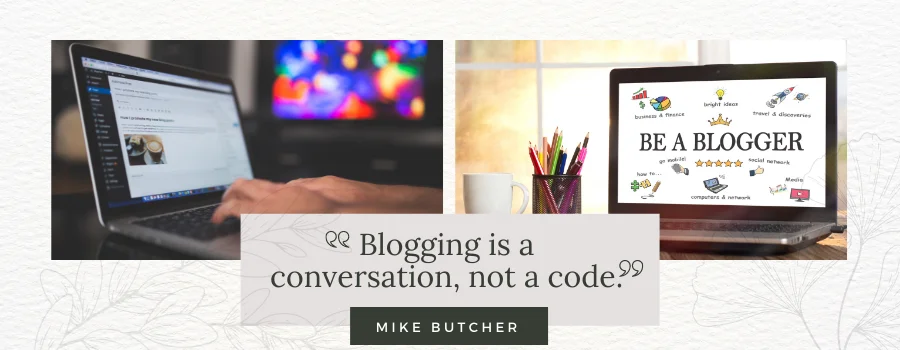Content marketing is a very effective form of marketing that has been around for ages, long before the internet in fact. It involves getting to know your audience’s problems or difficulties, and then providing the solution via content and products. But even the most successful content marketers had to start somewhere, and many of them made a lot of mistakes first starting out. We reached out and asked a group of the most successful content marketers just what mistakes they made in the beginning so you don’t have to repeat them.
"I was marketing content without an actual plan."
If you want to be successful, you need a content marketing plan. Look at where you are now and where you want to go. Then devise a plan of action to meet your goals.
Start by defining and describing your target audience. Plan to use the marketing methods that work best with your audience. Marketing methods might include email, social media, content, video, affiliate, etc. Based on the social media networks your audience prefers, create accounts on those platforms.
Make a marketing plan that includes the kinds of content you will create, as well as how, where, and when you will promote the content. Your goal is to reach your target market and turn them into customers. Use best practices when marketing to your audience. Adjust your plan based on your audience’s needs and their responses to your content.
"It took me far too long to start repurposing my content."
If creating new content stresses you out, the good news is that you can repurpose your older existing content. Just edit, update, and release it in a different format, such as turning a report into an ecourse. You may want to do the same with related content and release the items together as a new bundle.
Images qualify as content too. You can turn them into memes by adding quotes, tips, titles, and more. Another option is to add other elements to the images and create product covers.
Recorded webinars can be broken down into images, audio, and text products, which can be converted into a variety of formats and products from checklists to reports with audios.
Everyone has a different learning style and they like having content in different formats. Find out which formats your audience prefers and repurpose your content to meet their needs.

"I didn't recognize that infographics are, in reality, content."
Infographics may seem like a Pinterest clickbait trap, but they’re among the most popular pieces of content online and readily consumed 30% more often than written content.
Do a little research on your industry or niche and assemble some interesting facts, statistics and/or quotes. Slap them together with some relevant imagery and use a service like Canva to create your infographic in short-order.
Post your relevant and targeted infographics (with your brand and website on each one) on Pinterest and Facebook once a week. People love sharing infographics!
"I was actually writing the wrong content for the first year."
If you’re not making sales or getting click-throughs, you may have written the wrong content. This can happen when you don’t research your audience enough, understand the problem completely, or misunderstood the solution type/format the audience wanted.
The most important part of creating content is making sure you provide content your audience wants and needs. The best way to accomplish this is to research and study your audience, first.
When you find out what their problems are, create focused content that addresses their concerns, informs them of their options, and persuades them to try the solution you suggest.
"I didn't respond to questions, which meant, I wasn't engaging or growing as a content marketer."
Your audience will have questions about products and niche concepts. The questions will be everywhere you go, including social media, your blog, and your inbox. When a question is asked, it’s important that you or someone “official” answers or at least acknowledges/redirects it as soon as possible. To keep questions manageable, create a customer support area and redirect all questions there. Add an FAQ to make finding the answers easier for everyone.
While the questions may annoy you at times, they are a great sign! When people ask questions, it means they are reading your content. They’re interested in the topic. They value your opinion and want to know more.
Turn the questions into more content that will help others, and thank or call out the person who asked the question.
"I overcorrected and started promoting my content aggressively and constantly."
Content marketers sometimes sound like a used car salesman. For most audiences, a “hard sell” won’t work. Persuading your audience to buy or act on your recommendations is a much better tactic to use. Your content should inform, instruct, and inspire your audience to take a certain action, based on their trust in your opinion and judgement. To get them to act, build trust. Then show your audience how and why your recommended action/solution has helped others and how it could benefit them too. Don’t pursue, persuade.
"I got busy and outsourced my content to low-quality, but cheap, freelancers."
While you know to use high quality content, there are times when you can’t or don’t take the time to edit outsourced content as you normally would. If you’ve ever published content that isn’t up to your standard, you also probably felt a little guilty about doing so.
Just because a piece of content isn’t your usual, high-quality work, it’s not necessarily poor quality. It depends on how high your standards are and where you draw the “acceptable” line. What may be “acceptable” to one person may be “poor quality” to another.
To help you decide what is “acceptable” and what is not, ask yourself, “Would I pay for and use it, as-is or would I toss it in the trash, even if it was free?”
As far as guest blogging is concerned, don’t accept anything that isn’t at least equal to the content quality that is already on your site.
"My initial content wasn't skimmable... at all."
Online and offline readers tend to skim content, whether the content is a short article on your site or a long PDF report that has been downloaded. If you haven’t provided for the easy skimming of your content, you may lose readers and sales.
To avoid these consequences, make all your content skim ready. Use whitespace to help break up content. Create headings and subheadings that signify section/topic changes. Add bullet points to identify simple lists. Include relevant images to support written content.
"My titles weren't interesting enough."
Interesting, compelling titles sell content. Many content marketers just slap on a title that has keywords and a few descriptive words. Then they move on to the next project. This is a mistake.
One of the first things that grabs a reader’s attention is the title of the content. If the title is carefully crafted, it can induce the reader to take a closer look, read more about it, and buy. If the title doesn’t make the reader want to know more, it hasn’t done its job.
To keep this from happening, the title should intrigue, state an attainable promise, express a specific need, or state a fact that resonates with the reader. Make your content titles work harder and sell more content for you.
"I refused to hire help, so I tried to do everything myself, which didn't work."
You have exceptional skills and talents, but you also have your limitations. You can’t do it all, and you shouldn’t even try. Trying to do everything in your business only leads to a huge amount of stress being added to your plate. That makes things even more difficult.
When your business is still in the beginning stage, it is possible to perform many tasks without the help of someone else. However, learning complex skills that you will only use once or twice is a waste of your time. Web design and things that require highly specialized skills are good examples.
You need to enlist the help and expertise of others. Use your skills and talents to operate your business. You are the only person who can make “owner” decisions and plans. Learn to delegate. Start building your team now and let an experienced professional do all the rest.
In closing, if you’re made any of these mistakes, congrats, you’re in good company! After all, each of the quotes above are from currently successful marketers.
But now you know what to pay attention to, so you can avoid these very common pitfalls as you start ramping up your content marketing career.






